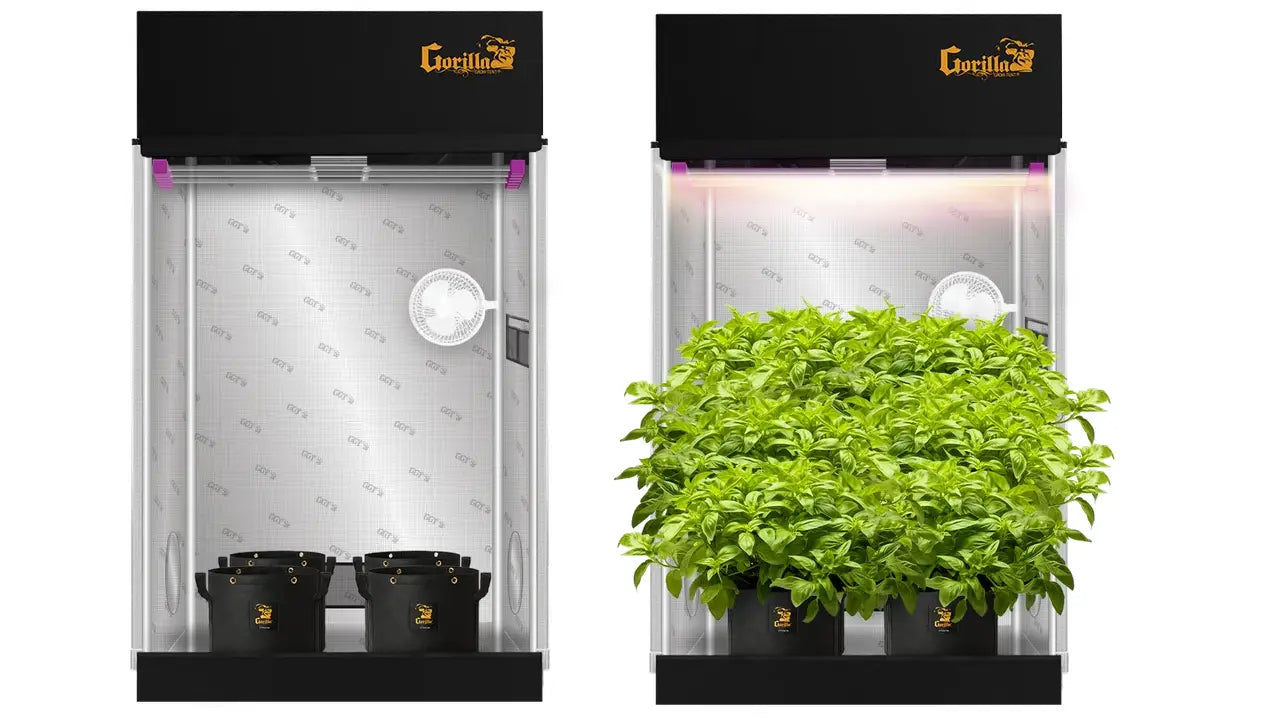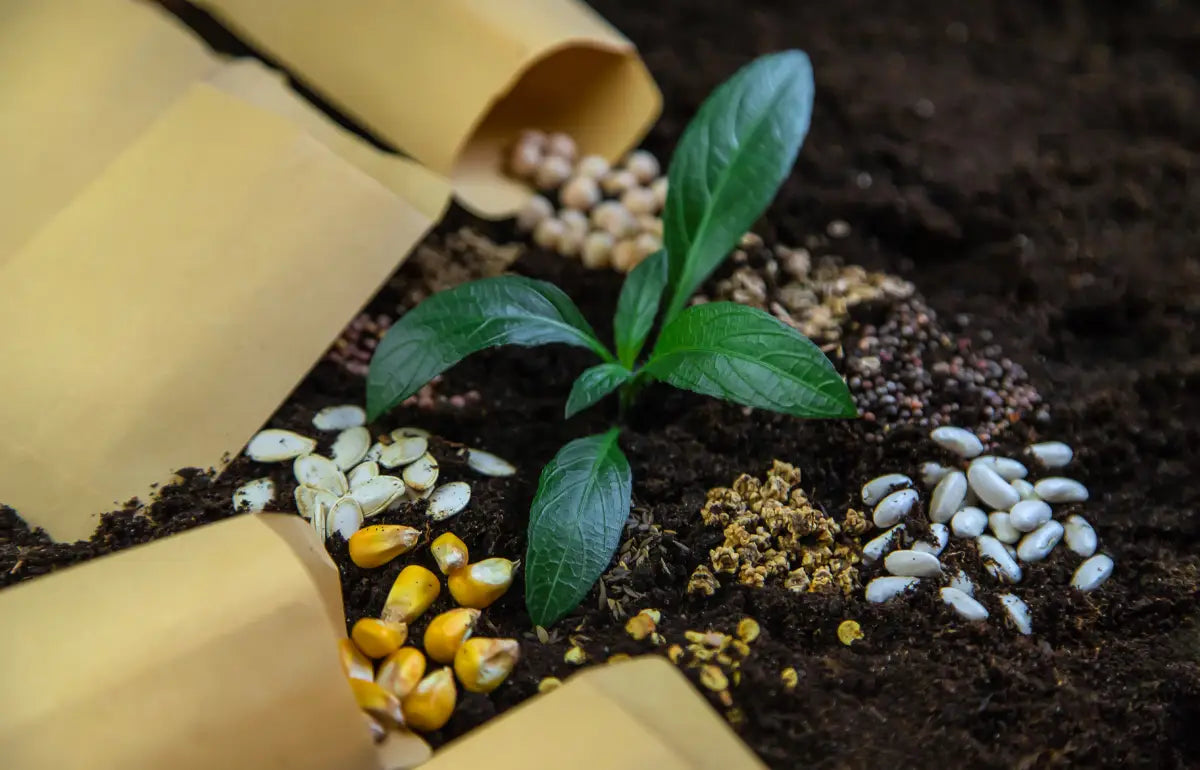
How to Lower kPa in a Grow Tent: Master Vapor Pressure Deficit
Maintaining optimal growing conditions is crucial for healthy plants and maximum yields in your grow tent. One of the most important yet often overlooked environmental factors is Vapor Pressure Deficit, measured in kilopascals (kPa). When kPa levels are too high, plants transpire too quickly, leading to stress, nutrient problems, and reduced growth. This comprehensive guide will walk you through everything you need to know about lowering kPa in your grow tent to create the perfect growing environment.
Understanding kPa and Vapor Pressure Deficit (VPD)
Before diving into solutions, it's important to understand what kPa and VPD actually mean for your plants.
What is Vapor Pressure Deficit?
Vapor Pressure Deficit (VPD) represents the difference between the amount of moisture in the air and how much moisture the air can hold when saturated at a specific temperature. This measurement is typically expressed in kilopascals (kPa) and directly affects how quickly water evaporates from your plants' leaves through transpiration.
In simple terms, when kPa is too high:
- Plants lose water faster than they can replace it
- Stomata (leaf pores) may close to prevent water loss
- Nutrient uptake and photosynthesis become compromised
- Plant growth slows or stops entirely
Why Lower kPa Levels Matter
Maintaining appropriate kPa levels is essential because:
- Optimal Transpiration: Proper kPa levels ensure plants transpire at the right rate, allowing them to take up nutrients efficiently without becoming dehydrated
- Stress Reduction: Lower kPa creates less demanding conditions for plants, particularly during sensitive growth stages
- Nutrient Efficiency: Balanced transpiration rates improve nutrient movement throughout the plant
- Disease Prevention: Appropriate moisture levels help prevent both drought stress and fungal issues
Ideal kPa Ranges for Different Growth Stages
Plants have different VPD requirements depending on their growth stage:
Seedling/Cloning Stage (0.4-0.8 kPa)
Young plants with undeveloped root systems need lower kPa levels to thrive. This corresponds to higher humidity (65-75%) at moderate temperatures (70-77°F/21-25°C).
Vegetative Stage (0.8-1.2 kPa)
As plants develop stronger root systems, they can handle moderate kPa levels. Aim for 50-70% humidity at 75-82°F (24-28°C).
Early Flowering Stage (1.0-1.3 kPa)
Slightly higher kPa is beneficial as plants transition to flowering. Humidity should be 45-55% with temperatures at 75-82°F (24-28°C).
Late Flowering Stage (1.2-1.6 kPa)
During late flowering, slightly higher kPa levels help prevent mold while promoting resin production. Aim for 40-50% humidity at similar temperatures.
How to Measure kPa in Your Grow Tent
Before making adjustments, you need to accurately measure current conditions:
Using a VPD/kPa Calculator
Many online calculators can determine your VPD/kPa once you input:
- Current temperature (°F or °C)
- Current relative humidity (%)
- Leaf temperature (typically 2-5°F/1-3°C below ambient temperature)
Smart Monitoring Systems
For precision and automation, the Gorilla GXi WiFi Temperature and Humidity Sensor provides:
- Real-time kPa/VPD calculations
- Wireless monitoring through the Gorilla Grow Tent App
- Automatic alerts when conditions drift outside ideal ranges
- Integration with other GXi equipment for automated environmental control
9 Effective Methods to Lower kPa in Your Grow Tent
1. Increase Humidity
Since kPa represents the air's capacity to hold additional moisture, increasing humidity is the most direct way to lower kPa levels.
Implementation strategies:
- Add a humidifier: Position a humidifier inside or just outside your tent
- Use water trays: Place open containers of water inside the tent
- Mist the air: Use a fine spray bottle (avoid spraying plants directly during flowering)
- Hang wet towels: Damp towels hung in the tent will gradually release moisture
Pro tip: For seedlings and young plants, consider a humidity dome to maintain very high humidity in their immediate environment.
2. Lower Temperature
Temperature directly affects how much moisture air can hold—cooler air has a lower moisture capacity, which reduces VPD even at the same relative humidity percentage.
Implementation strategies:
- Adjust lighting schedule: Run lights during cooler parts of the day/night
- Improve ventilation: Ensure proper air exchange to remove heat
- Use LED lights: They generate less heat than HID alternatives
- Add air conditioning: For more precise temperature control
Pro tip: To reduce temperatures without affecting humidity too much, cool the air before it enters your tent rather than merely exhausting hot air.
3. Optimize Airflow and Ventilation
Proper air circulation helps distribute moisture evenly and prevents microclimates with varying kPa levels.
Implementation strategies:
- Add oscillating fans: Create gentle, consistent air movement
- Balance intake and exhaust: Slightly reduce exhaust fan speed to maintain humidity
- Eliminate dead spots: Ensure air flows to all areas of your tent
- Use fabric pots: They allow moisture to evaporate from the sides, increasing local humidity
4. Use a Tent with Better Insulation
The quality of your grow tent affects how well it maintains consistent environmental conditions.
Implementation strategies:
- Upgrade to a premium grow tent: The Gorilla Grow Tent with 1680D thick canvas provides superior insulation and moisture retention
- Seal any leaks: Check for and repair any air leaks in your current tent
- Add insulation: Place reflective material on the outside of the tent in extreme environments
5. Adjust Watering Practices
How and when you water affects the humidity inside your grow tent.
Implementation strategies:
- Water at the start of the light cycle: This increases humidity when plants are most active
- Increase watering frequency: More frequent, lighter waterings can maintain higher humidity
- Use large saucers: Allow some water to evaporate from overflow trays
- Consider hydroponics: Water-based growing systems typically maintain higher humidity
6. Create a Microclimate
For targeted kPa management, create specific microclimates within your tent.
Implementation strategies:
- Use humidifiers with directional output: Point them where needed most
- Install humidity domes: For seedlings and clones
- Create zones: Partition your tent with plastic sheeting for different VPD zones
- Use plant canopy as natural barrier: Denser foliage creates more humid areas below
7. Monitor and Control With Smart Systems
Automated systems can maintain perfect kPa levels with minimal intervention.
Implementation strategies:
- Install the GXi ecosystem: The Gorilla GXi WiFi Temperature and Humidity Sensor paired with GXi fans can automatically adjust conditions
- Use programmable controllers: Set equipment to maintain ideal conditions throughout the day/night cycle
- Create custom programs: Adjust settings for different growth stages
- Set up alerts: Receive notifications when conditions drift outside optimal ranges
8. Adjust Growing Medium and Container Size
Your choice of growing medium and containers affects moisture levels in your tent.
Implementation strategies:
- Use moisture-retentive growing media: Coco coir holds moisture well
- Add water-retaining amendments: Products like perlite or vermiculite
- Consider container size: Larger containers hold more moisture
- Try self-watering containers: These maintain consistent moisture levels
9. Implement Foliar Feeding
Spraying nutrients directly on leaves can help lower kPa while providing additional benefits.
Implementation strategies:
- Morning foliar sprays: Apply early in the light cycle to increase humidity
- Use fine mist sprayers: Ensure even coverage without large droplets
- Include beneficial additives: Silica helps plants resist drought stress
- Avoid during flowering: Only use during vegetative stage to prevent mold issues
Note: Always discontinue foliar feeding at least 2-3 weeks before harvest.
Advanced Tips for Managing kPa in Different Scenarios
Dealing with Extreme Environments
In challenging climate conditions, additional measures may be necessary:
Hot, Dry Climates:
- Consider a swamp cooler for efficient cooling that adds humidity
- Install automated misting systems
- Use larger water reservoirs for humidifiers
- Create a "wet wall" by hanging saturated material in front of intake air
Cool, Damp Climates:
- Focus on temperature control more than humidity
- Use slightly warmer temperatures to avoid excessive humidity
- Install dehumidifiers outside the tent to pre-condition intake air
- Consider supplemental CO₂ to improve plant performance at higher temperatures
Seasonal Adjustments
Your approach to kPa management should change with the seasons:
Summer Strategy:
- Focus on cooling and increasing humidity
- Run lights at night when ambient temperatures are lower
- Increase fan speeds during hottest periods
- Use ice packs or frozen water bottles near intakes for emergency cooling
Winter Strategy:
- Manage heating to avoid drying out the air
- Increase humidification as indoor heating reduces ambient humidity
- Insulate tent from cold surfaces to prevent condensation
- Reduce air exchange rates to retain humidity
Troubleshooting High kPa Issues
Identifying High kPa Symptoms in Plants
Plants will show specific stress signals when kPa is too high:
- Leaf curling or cupping: Leaves curl upward to reduce surface area
- Crispy leaf edges: Moisture loss exceeds uptake
- Wilting despite moist soil: Roots can't keep up with transpiration demands
- Slowed growth: Plant diverts energy to water conservation
- Nutrient deficiencies: Reduced nutrient transport due to limited transpiration
Common Mistakes to Avoid
1. Overcompensating with Too Much Humidity
While increasing humidity lowers kPa, excessive humidity (especially during flowering) can lead to mold issues. Always balance kPa management with disease prevention.
2. Focusing Only on Relative Humidity
Remember that VPD/kPa is about the relationship between temperature and humidity. Both must be managed together for effective control.
3. Creating Stagnant Air
When increasing humidity, maintain adequate air circulation to prevent dead spots and mold development.
4. Neglecting Nighttime Conditions
VPD changes when lights go off and temperatures drop. Create separate day/night management strategies.
5. Inconsistent Monitoring
VPD can fluctuate rapidly. Continuous monitoring with quality equipment is essential for maintaining ideal conditions.
The Complete kPa Management System
For truly optimal results, consider implementing a complete environmental control system:
Essential Components:
- Accurate Monitoring: Gorilla GXi WiFi Temperature and Humidity Sensor for precise readings
- Quality Grow Tent: Gorilla Grow Tent with 1680D material for superior environmental control
- Automated Control: GXi ecosystem with smart fans and lighting that respond to environmental conditions
- Proper Ventilation: Balanced intake and exhaust with variable speed control
- Consistent Humidification: Reliable humidifier with adequate capacity
Implementation Strategy:
- Establish baseline: Measure current conditions throughout a full day/night cycle
- Set targets: Determine ideal kPa ranges based on plant type and growth stage
- Make gradual adjustments: Change one variable at a time, observing results
- Create automation rules: Program equipment to maintain conditions automatically
- Monitor and refine: Regularly check system performance and plant response
Conclusion: The Benefits of Mastering kPa Control
Taking the time to understand and properly manage kPa levels in your grow tent delivers significant benefits:
- Maximized growth rates: Plants develop faster when transpiration is optimized
- Improved nutrient uptake: Proper water movement enhances nutrient transport
- Stress reduction: Plants remain healthy and vigorous
- Disease prevention: Balanced moisture levels discourage both drought stress and fungal issues
- Higher yields: Optimized environments produce better results at harvest time
By implementing the strategies outlined in this guide and utilizing quality equipment like the Gorilla GXi ecosystem, you can create the perfect growing environment where your plants thrive through every stage of development. Remember that consistent conditions, rather than perfect but fluctuating ones, are the key to success in indoor growing.
Whether you're growing vegetables, herbs, flowers, or other plants, mastering kPa control will take your indoor gardening results to professional levels. Start with the basics, add automation as you become comfortable with the concepts, and watch your plants respond with vibrant growth and exceptional yields.
Ready to take control of your grow tent's environment? Explore the complete line of Gorilla Grow Tents and GXi smart environmental controls for professional-level results.

Lena Myles
I'm a mushroom enthusiast and home cook based in Oregon. I'm passionate about foraging and creating fungi-focused recipes, especially delicious, plant-based dishes using gourmet mushrooms like trumpet, shiitake, and oyster. When I’m not in the kitchen, you’ll usually find me wandering the woods in search of new wild flavors.



